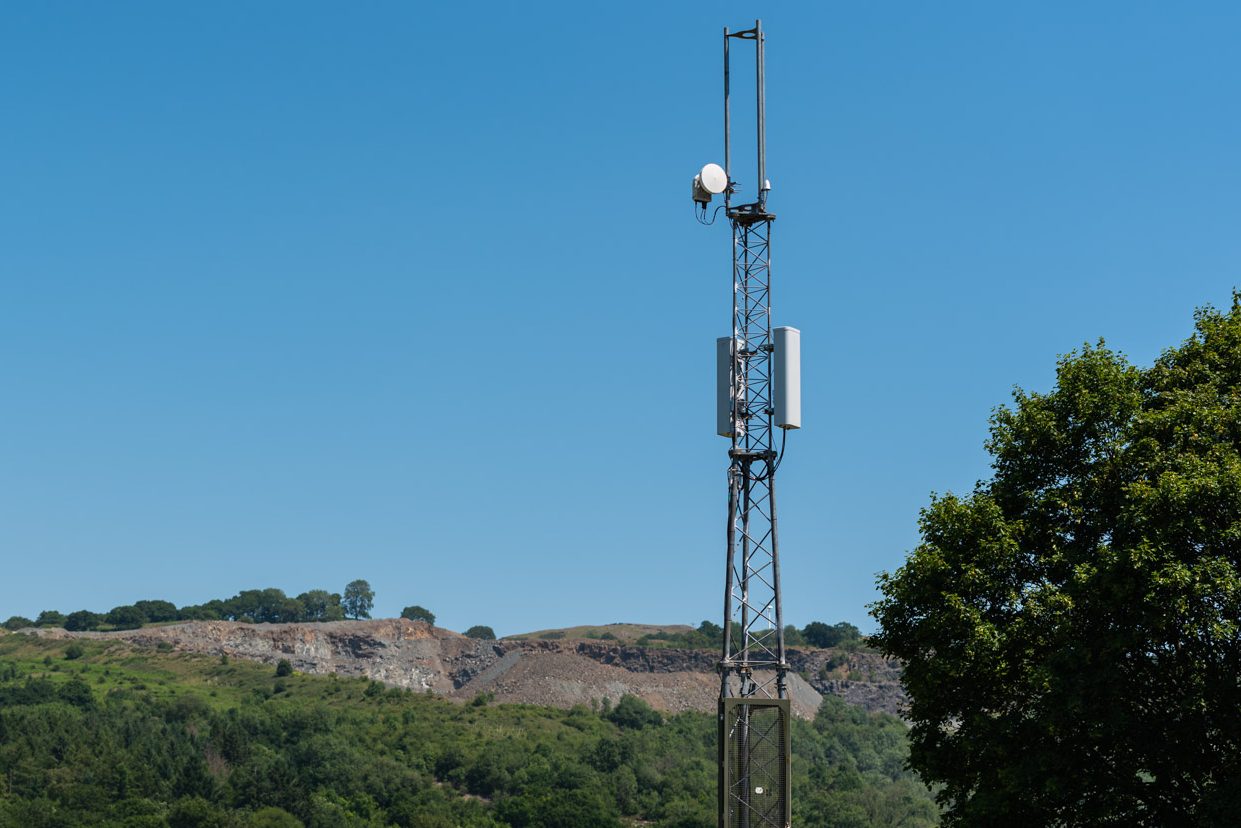
Scott Petty, Chief Technology Officer, Vodafone UK, explains why the company is making such a big investment in OpenRAN technology.
Earlier this week, Vodafone announced that it would be deploying OpenRAN technology at 2,600 mobile sites across Wales and the South West of England. A commitment to a developing technology ecosystem which few else in the world can match.
But, what is OpenRAN and why is it so important to Vodafone’s network strategy?
There are multiple elements of the OpenRAN concept, but there are two which are perhaps more important than others: the separation of hardware and software components, and interoperability between suppliers.
And there is one big goal: to introduce much-needed diversification into the supply of telecom equipment.
Separation – or disaggregation in the jargon – of hardware and software means a telecoms company would not have to use the same supplier for both hardware and software on a mobile site. By separating these two components, specialist software companies can be brought into the fray, while general-purpose hardware can be created for deployment.
This significantly reduces the cost of hardware, and also enables the shift towards greater flexibility, as more equipment becomes upgradeable remotely.
The interoperability element is just as important.
This means any product from any supplier will work seamlessly with any other in the network. Today, products from different suppliers struggle to ‘talk’ to each other, limiting an operator’s chances to introduce new partners. Where operators do currently have two or more suppliers in their network, each one is deployed in a geographical cluster, and the points at which those clusters meet are often the most challenging in terms of performance.
Expanding the supplier ecosystem is critical for a couple of reasons.
Firstly, a greater number of suppliers encourages competition and therefore innovation. It is also very important to keep the cost of sourcing products and services as low as sustainably possible for the ecosystem to thrive.
Secondly, the greater the number of suppliers, the more resilient Vodafone’s network will become as it lowers the risk of a single supplier’s change of circumstances negatively impacting the business.
Catch-22
Supplier diversity is an objective for both the telecoms operators and the UK Government, but the difficulty in pushing forward is the inherent traditionalist and risk-averse attitudes of the industry. For the most part, telecoms operators will sit and wait for a perfectly crafted solution to appear before committing investment. This makes it difficult for new and innovative technologies to make an impact.
Our commitment to dedicate 2,600 sites to OpenRAN technology will provide momentum and, more importantly, investment for these companies to grow and enhance their products.
Everyone in the industry is talking about the importance of OpenRAN, but the ‘sit and wait’ attitudes have gripped many telecoms operators. This is a Catch-22 situation, with the telecoms operators waiting for perfect technology before investing while the OpenRAN ecosystem waits for investment to perfect the technology.
We believe our early-stage investment will prove to be the catalyst to break this stand-off. And as I told the Financial Times, it could give the UK an opportunity to gain a foothold in the telecoms equipment market.
Investing in innovation
Alongside this commitment, Vodafone also announced it will open multiple OpenRAN Research & Development labs across Europe. This is another commitment to the ecosystem, and a pillar of Vodafone’s European innovation strategy.
These labs will allow OpenRAN companies to validate their technology in a telecoms lab, and also receive advice from Vodafone engineers on how the products can be enhanced and scaled up.
Both of these developments are central to Vodafone’s innovation strategy and critical to the success of the industry.
So we’re proud to be taking a lead and driving the development and adoption of the OpenRAN ecosystem.
- Follow @VodafoneUKNews on Twitter.




![Fan hand with mobile phone photographing football game[Adobe Stock] a stock photo of a sports fan's hand holding a mobile phone up to photograph a football game in a stadium [Adobe Stock]](https://www.vodafone.co.uk/newscentre/app/uploads/2024/08/Fan-hand-with-mobile-phone-photographing-football-gameAdobe-Stock.jpg)

![tracking a moving truck top down view [Adobe Stock] AI-generated top-down illustration of a moving lorry being tracked](https://www.vodafone.co.uk/newscentre/app/uploads/2024/07/tracking-a-moving-truck-top-down-view-Adobe-Stock.jpg)
![stock image of a refuse collector and a wheelie bin in front of a bin lorry [Adobe Stock] stock image of a refuse collector and a wheelie bin in front of a bin lorry](https://www.vodafone.co.uk/newscentre/app/uploads/2024/07/Garbage-Removal-Man-Adobe-Stock.jpg)
![DJI_0058[OPTIMISED]](https://www.vodafone.co.uk/newscentre/app/uploads/2024/07/DJI_0058OPTIMISED.jpg)
![Front view woman and man wearing sunglasses [Adobe Stock] cropped edited stock image of a woman and man, both wearing sunglasses, taking a selfie using a smartphone while posing by the waterside](https://www.vodafone.co.uk/newscentre/app/uploads/2024/07/Front-view-woman-and-man-wearing-sunglasses-Adobe-Stock-cropped-edited.jpg)